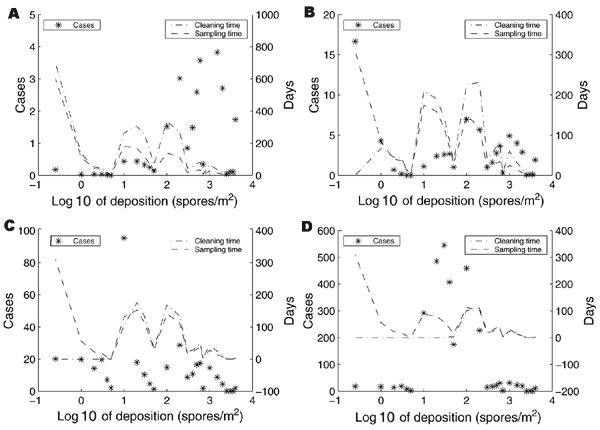| |
Figure 5. The horizontal axes in these 4 plots give the original
room deposition level before remediation begins. These plots show how
the total number of anthrax cases (the stars and the left vertical axes)
are distributed across room deposition levels, e.g., in plot A, most of
the anthrax cases occur in rooms with original deposition levels >100
spores/m2. Similarly, the 2 curves and the right vertical axis
of each plot show how much time is spent cleaning and sampling in rooms
of various deposition levels. These 4 plots are identical except that
the spore concentration threshold in spores/m2 ( ), which dictates
when remediation is stopped, is A) ), which dictates
when remediation is stopped, is A)  = 0.1; B) = 0.1; B)  = 1; C) = 1; C)  = 10; D) = 10; D)  = 100. These
plots motivate the hybrid policy, which fumigates heavily contaminated
rooms and uses the HEPA/vaccine approach in lightly contaminated rooms. = 100. These
plots motivate the hybrid policy, which fumigates heavily contaminated
rooms and uses the HEPA/vaccine approach in lightly contaminated rooms.
|

